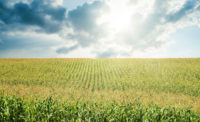Advancing the storylines of 2015
By Chris Flocchini
Sierra Meat & Seafood
As CEO of Sierra Meat & Seafood — a sustainable, vertically integrated and family-owned business — it’s safe to say I’m opinionated on the food space, both where it’s been and where it’s going. As we continue through the first quarter of 2016, below are the top trends that I believe will surge this year and create dramatic shifts in the consumer landscape.
1. ‘Sustainable’ and ‘Natural’ will matter
As consumers continue to focus on well-being in the coming year, it’s no surprise that 2016 will bring continued momentum to the sustainable movement.
In 2015, the definition of sustainable was on the verge of being completely discounted as a marketing term — but in 2016, we’ll see a more meaningful definition of the word emerge as qualifications on food labeling become more clear. Not only will this benefit consumers by minimizing confusion, but it also will reward producers who stick to the highest standards of quality.
2. Responsible, careful use of antibiotics will return
The antibiotics debate has been a heated topic for years now — and it’s often driven by misinformation and a lack of understanding. In 2016, we’ll see a greater awareness of the benefits of using antibiotics responsibly for animal welfare.
Today’s consumer wants some assurance that the meat they are consuming does not have antibiotic residue — and I can’t blame them. That said, the use of antibiotics for animal welfare is absolutely necessary. When administered correctly, antibiotics treat diseases, reduce unnecessary suffering and are no longer present in the animal’s system in 90 days.
Complete elimination of the use of antibiotics in livestock means a sick animal — even an animal with a small fever — will suffer and eventually die without treatment. Antibiotics are not meant to promote unnatural growth or compensate for overcrowded feedlots, but they are essential for animal welfare — after all, food safety begins with healthy animals.
3. Local becomes great
The local food movement gained serious traction in 2015, but until now the problem has been that local doesn’t always mean better. We all feel good about supporting local and want to make it a part of our daily lives, but the fact of the matter is, taste and quality can sometimes be lacking. A friend of mine likes to say, “People have fallen in love with the menu and not the food.”
Local producers understand this and are now prepared to meet the demands of local shoppers and diners. In 2016, fans of local food will fall back in love with the food, first and foremost.
4. Specialty proteins: more accessible, approachable
In recent years, specialty proteins have been on the rise, and this year, demand will surge for things like bison, Wagyu beef, venison, elk and Berkshire pork. Buzzfeed recently reported on this trend via Whole Foods, and I fully agree. Consumers are beginning to see the health benefits and ease of cooking that these specialty meats can provide.
Take bison for example. It offers more protein and nutrients with fewer calories, less cholesterol, and less fat. In fact, bison is lower in calories and fat than beef and turkey, and higher in protein and iron than your basic burger. Because bison is free-range and grass-fed, it’s also free of growth hormones.
Because of the rise on consumer demand, these specialty products will also become much more accessible and become a staple on your family’s dinner table.
5. Industry consolidation will surge
As consumer demand for specialty and niche proteins continues to grow, food giants want in on the game. As you might imagine, it’s much easier to acquire a company that’s doing something well than to start a program from scratch yourself. In 2016, we’re going to see more and more consolidation within the industry.
We’ve seen some of this in 2015 — with Hormel Foods paying $775 million to buy organic processor Applegate Farms, and Nestle acquiring KRAVE, a maker of artisanal beef jerky — but we’ll see more and more of these strategic acquisitions within the space. NP
The year of grass-fed beef
By Dana Ehrlich
Verde Farms
Looking back on the last few years, it’s evident that U.S. consumers are shifting the way in which they think about meat. It’s neither about excess, nor deprivation — but rather a balanced diet in which there’s room for high-quality beef. As we work through 2016, balance will continue to be the theme as consumers don’t want to cut meat out altogether. Instead, it will be about eating better meat — more nutritious and better for both the environment and for the animals themselves.
Shoppers are educating themselves about their best options, and grass-fed beef is rising to the top of their grocery lists. This increased demand for grass-fed beef has helped Verde Farms, a company that only offers grass-fed meats, grow tremendously. This year, we’ve quadrupled our sales team, moved into a new headquarters, expanded our product line and bolstered our supply chain to be better positioned to meet the demand. What’s to come in 2016 for grass-fed? Four main predictions rise to the top:
1. From specialty to mass
Organic grass-fed meat will be more readily available at supermarkets across the country.
Until recently, the demand for grass-fed beef in this country hadn’t even approached the edge of critical mass, resulting in limited distribution through specialty and gourmet grocers. With increasing awareness around the environmental and health benefits of grass-fed beef, consumers are seeking out grass-fed and willing to pay more. In fact, a 6-ounce grass-fed steak may have almost 100 fewer calories than a 6-ounce grain-fed steak and about the same amount of fat as skinless chicken. And, despite being low in “bad” fat (saturated), it may give you two to six times more of healthy Omega-3s than grain-fed beef (according to AmericanGrassfedBeef.com).
At Verde Farms, we’re speaking with meat buyers at grocery chains across the country who are hearing that shoppers are increasingly seeking out grass-fed meat. This has led them to re-think their meat case in the coming year to make more room for not just organic, grass-fed ground beef, but also more cuts like chuck roast, sirloin, and tenderloin.
As a result, consumers can expect to see a lot more from the Verde Farms brand in 2016. We’re working toward a much stronger presence in multiple grocery aisles nationwide by developing a range of new products.
Of course, as demand increases, grass-fed beef production will also have to increase, inevitably making the product more cost-efficient to retailers and consumers — in effect, leading to greater access to grass-fed beef for everyone.
2. Taking center stage on menus
The demand for grass-fed will affect foodservice as well. Sure, there are some restaurants touting their grass-fed burgers now, but we think the trend has plenty of room to grow in the New Year and beyond.
Thus far, grass-fed beef has rarely met the quality, consistency or flavor standards demanded by foodservice professionals. The reason for this is due to the supply chain including breeds, raising and feed methodology, and geography – and foodservice establishments (like steakhouses) may look for USDA Prime Beef, which the grass-fed industry has not been able to provide. In the U.S, much of the grass-fed beef is also sourced from older dairy cattle, resulting in a tougher texture and stronger flavor than what is desired.
Verde Farms’ foodservice program is actually centered on one of the world’s premier grass-fed programs out of Australia. Cattle from this program feed on pastures of highly nutritious grasses 100% of the time, causing them to grow and mature faster than normal grass-fed cattle while still producing a tender, more delicious meat that absorbs the characteristics of the local feed for a unique, wonderful flavor experience. The faster the cattle mature, the faster product can be produced, increasing volume. As importers like Verde Farms help satisfy U.S. demand and supply increases, quality and consistency will increase — meaning that demand for grass-fed from foodservice will follow in the footsteps of retail.
Our mission is to provide consumers with a truly better option — one that is grounded by three guiding principles: health benefits for the consumer, animal welfare and environmental sustainability. In the coming year, look for foodservice — from QSR to four-star establishments — to value this more outwardly, carefully selecting different cuts (from ends to middles) to meet their customers’ desire for grass-fed meats.
3. Calling it out
“Grass-fed” will be a front-of-package ingredient call-out.
Just because a food product is meant to offer a convenience to consumers doesn’t mean it can cut corners with its recipe or ingredients. Frozen and ready-to-eat product formulations will also raise the bar in 2016 and start to more regularly feature grass-fed meat as an ingredient to attract savvy shoppers. To align with increasing customer interest, many retailers will have expansion of ready-to-eat and ready-to-cook categories — in addition to their main meat offerings — top of mind to round out their variety of grass-fed items.
4. Brand matters even more
In light of the Agricultural Marketing Service’s recent decision to rescind the labeling standard for grass-fed meat, branding is going to matter more than ever before. Unfortunately, consumers will no longer be able to rely on labeling alone to know what they’re buying and eating.
Without a USDA standard for grass-fed labeling, more brands will now call their products “grass-fed,” and brands whose cattle may have only eaten a single blade of grass in their lifetime may share shelf space with brands offering 100% grass-fed and grass-finished beef — a very murky and confusing situation for consumers. It certainly brings to mind the meaningless “natural” claim often seen on products that are little more than junk food.
In an effort to combat this, some brands, including Verde Farms, will provide more transparency to consumers than ever before to prove their authenticity. This year, Verde Farms will offer more educational opportunities on its website for customers to get a full, clear view of its 100% grass-fed and grass-finished beef supply chain – including “Meet the Farmer” style videos and data around the brand’s environmental, health, and animal welfare impact. Similarly, this year will provide retailers an opportunity to differentiate themselves by offering consumers educational information on shelving and in marketing materials. The smart and savvy retailers will do this to put power back into consumers’ hands where AMS has taken it away.
5. Global, not just local
I love everything that the local food movement has done to empower consumers and get them invested in thinking about where their food comes from. In many cases, the locavore model is great — but when it comes to grass-fed beef production, my prediction is resolutely global. In fact, none of my other 2016 predications can become reality unless we are open to the import of grass-fed beef from countries such as Australia and Uruguay, which have been raising cattle this way for hundreds of years.
To meet demand and provide the best quality grass-fed beef product, we at Verde Farms have had to look across the globe for partners whose farming practices deliver the best product coupled with the least environmental impact. Right now, the number of U.S. grass-fed suppliers cannot maintain the level of current demand at the right price and quality, making import a crucial supply-chain strategy. We’re excited by this ever-growing demand for grass-fed meat, and look forward to further supporting the supply of high-quality, naturally-raised meats worldwide through our imports. NP





Report Abusive Comment